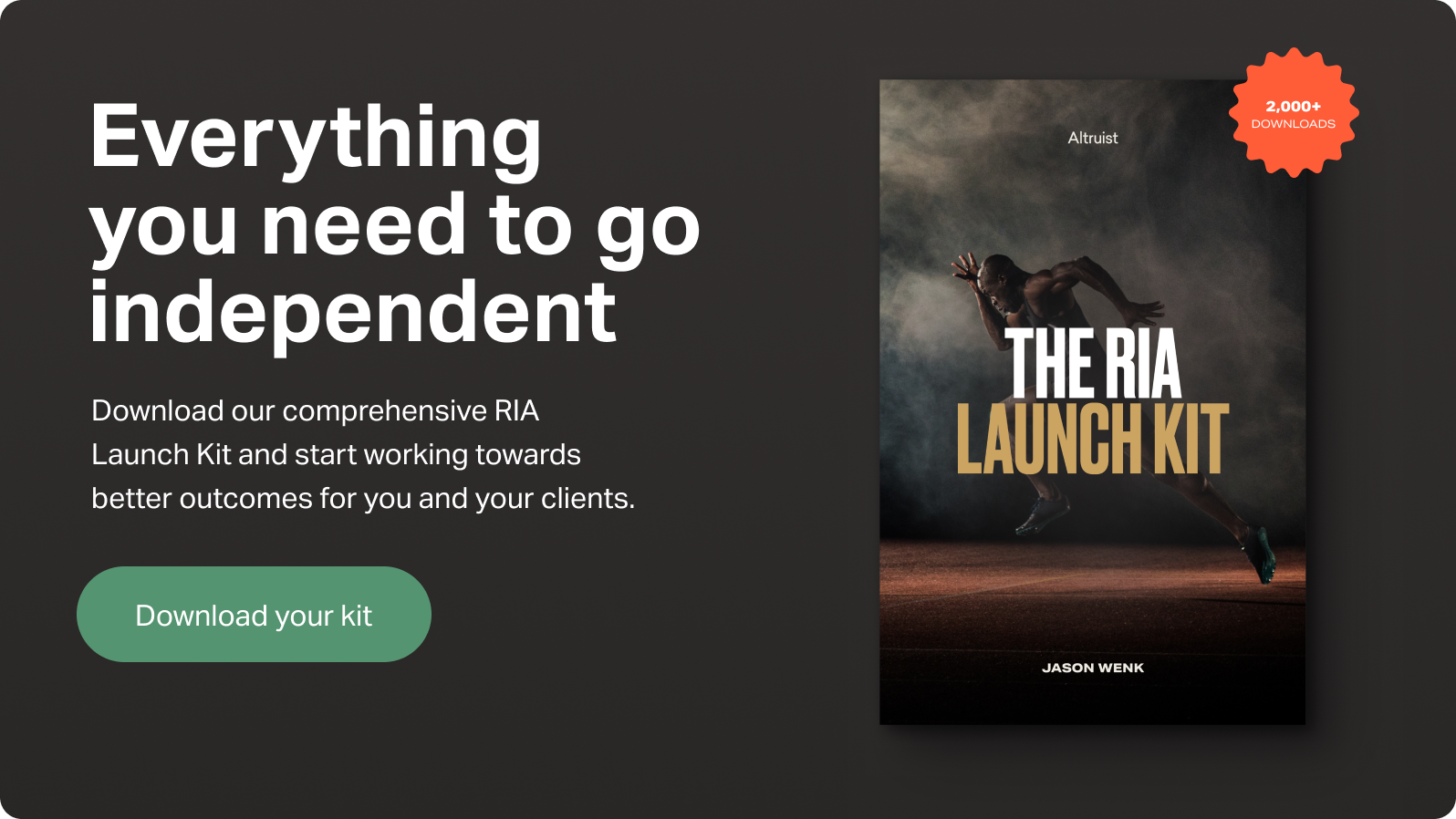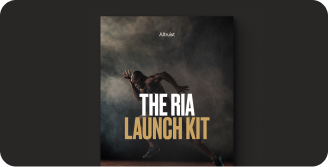Many financial advisors would admit that digital marketing (and all it involves) is not their forte. It’s not through lack of interest, more that Registered Investment Advisers (RIAs) are unclear of how to achieve the widespread benefits of a strong digital presence.
RIAs thrive on personal interaction and face-to-face engagement, typically relying on word of mouth, referrals, and out-of-home advertising to spread the word and drum up new business. What you perhaps don’t know, is that a good website represents another vital tool for attracting new customers and converting interested parties.
Websites for financial advisors have the potential to be much more than a basic information hub with a phone number or contact page. It’s arguably the most important component of an advisor’s digital presence. It’s your storefront, a representation of your brand mission, a powerful sales tool for both acquiring new business and retaining existing customers.
Why then, are RIAs reticent to pour more investment into their website? Of course, time is precious (81% of RIAs lack the time for marketing efforts) and resources are tight, especially when some operate as a one-person band. But with such a wealth of benefits, from building credibility and trust to delivering an enhanced client experience, financial advisors simply cannot ignore the power of the website any longer. It’s time for an upgrade.
Why now’s the time to evolve your financial advisor website
While the face-to-face aspect of financial services remains a critical component, a significant share of the modern customer journey now takes place online, often before RIAs even touch base with a prospective client.
Research shows over half of online investors don’t have a brand in mind before they start looking for an advisor, with 86% of potential investors spending over an hour, on average, researching online.
Despite this, RIAs are struggling to derive monetary value from their websites, unable to translate web traffic into tangible ROI. Worryingly, only 43% of RIAs experienced increases in inbound prospect requests during 2022, down from 59% in 2021.
While more people are spending more time researching and making informed decisions online, inbound prospect requests from investment advisor websites are shrinking. What needs to change in order to attract more visitors to your website, and transform them from nameless number into converted customer?
Essential features of the best RIA websites
In years past, a website visitor would remain just that – an anonymous number, an interesting statistic that demonstrated the popularity of certain pages on your site. Nowadays, using a clever mix of first-party cookies, advanced analytics, and personalized content experiences, a website visitor is transformed into a prospect, and potentially a paying, long-term customer.
So, what are the essential features of a good financial advisor website?
Back to basics
Let’s start at the beginning. Before experimenting with advanced analytics or other sophisticated techniques enabled by your website, RIAs must ensure they’ve absolutely nailed the fundamentals of delivering an intuitive and consistent web experience.
- Mobile functionality: You’d be surprised how many RIA websites fall short when it comes to mobile experience. You’re missing a trick if the desktop version of your website isn’t functional on mobile. The best RIAs, however, offer two versions of their website, one for desktop and the other for mobile/tablet (some even offer dedicated mobile apps). The branding and content are all the same, but each version is designed specifically to function on different devices, allowing users to flit painlessly between devices, depending on their situation.
- Up-to-date information: Contact details, employee pages, client history, and other basic company information need regular spring cleaning. It’s also an opportunity to inject some personality into your website and discuss your brand mission. Keeping these sections of your website spick and span is a minimum requirement for maintaining a consistent website experience.
- Consistent branding: The best digital marketers will tell you, a website is never ‘finished’. It’s a constantly evolving entity and, as such, some pages and sections of a website can easily be left behind. For example, a redesign that doesn’t encompass the whole website, an old product or offer that still occasionally pops up – both are examples of inconsistent branding. In an age where people expect a seamless digital customer journey every time, a fragmented and disjointed website experience could easily send them looking elsewhere.
- Clear CTAs: A good CTA (call to action) always provides value. If someone’s just landed on your website, don’t immediately bombard them with pop-ups or pushy CTAs pestering them to book a consultation. It’s all about the journey, a patient approach that nurtures over time. Clear and easy-to-read CTAs are the way to go, that make sense to the page on which they’re sitting, and direct your visitor to another section of the website where they can continue deriving additional value.
Next-level features
Once you’ve mastered the basics, it’s time to take your RIA website to the next level.
- Regular thought leadership: One of the best ways to demonstrate your expertise to prospects and customers is through regular content. This can come in the form of basic blogs that help untangle complex investment topics, to genuine thought leadership content like webinars and how-to videos that provide insights into current and future trends. Not only does content represent a solid way to build trust with customers, it can also propel your website up the SEO rankings, ensuring your name is one of the first to appear on search engines.
- Integrated analytics: If you’re looking at investing in your website, chances are you’ve also dipped your toes in other forms of digital marketing. Social media, display advertising, email marketing – by connecting these together, your website can become the lynchpin for your digital efforts. For example, RIAs can automatically cross-post popular content to social media channels, or track click-through rates from email campaigns, even tracking where users typically drop off the website.
- Personalization potential: A personalized website experience is one of the best ways to convert curious prospects into paying customers, while also keeping existing clients feeling valued and cherished. At the least, your website should take into account a visitor’s location (or even language if you possess a global presence). Going even further, websites can track interest areas, and automatically suggest further reading or useful links for visitors. For example, if a prospect or customer regularly browses stock-related content, you can send them more high-value content related to that topic, or even suggest an appointment to discuss further.
The best financial advisor websites in action
Lists of key benefits and features can only get you so far. If you’re lacking inspiration on what a stellar RIA website actually looks like, it’s time to learn from some of the best in the business:
1. RLS Wealth: Clean, crisp, and dynamic. RLS takes a minimalist approach, which helps its brand mission shine through. There are clear CTAs throughout, and you don’t have to scroll far to find the firm’s insights page, which possesses an engaging personal touch in the form of a weekly blog authored by the firm’s founder.
2. Stash Wealth: Stash’s website is as clear as it gets. There’s an unmistakable target audience (young high earners and entrepreneurs), reviews and testimonials instantly promote credibility, and their transparent pricing models are a refreshing touch. The website is full of the no-nonsense, candid branding and language (how many investment sites drop the ’s’ bomb on their homepage?) that attract a younger generation of investment enthusiasts.
3. RPI Financial Life Planners: From the off, it’s clear that RPI has a distinct brand mission, to treat its clients like family – a message that consistently resonates throughout the entire website. It’s also obvious RPI has gone great lengths to make its website a rich educational hub. Going far beyond the traditional throwaway blog page, RPI’s ‘Education Center’ is crammed with thought leadership, multimedia content, and insightful presentations – all anchored by clear and unobtrusive CTAs.
RIA websites: No longer a nice-to-have, but a business imperative
Until recently, RIAs may have gotten away with a basic website, letting it sit to collect dust. However, with so much of the customer journey now taking place online, it quickly becomes obvious when a financial website has been left to rot.
Websites are no longer a bolted-on extension of your company or a nice-to-have, they’re absolutely fundamental to succeeding in the digital-first era.
The encouraging news is that RIAs no longer need to rely on software engineers to work their magic in the back-end of a website. There are a host of intuitive platforms out there, allowing financial advisors to transform their website into a solid inbound marketing tool, without breaking the bank or requiring deep coding nous.
What’s more, this technology is also more accessible and affordable than it’s ever been. There’s a real opportunity in the market for RIAs to break away from the pack by creating a website and digital presence that’s extremely powerful and genuinely unique.













